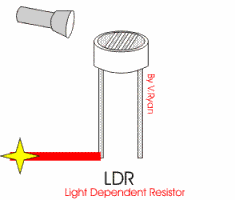By thinknut.blogspot.com
Missing Card Illusion
is currently testing new software that a reader's preferences based on themotion the reader uses to scroll down through aweb page. To help us test this program, please choose a card from one of those at right (there is no need to click on it, just make a mental note of it). Now scroll down to the picture below before reading the rest of this article. Did we remove the correct card?
Actually, there's no such program. What you've just seen is a simple, but impressive missing card illusion similar to one that was supposedly created by David Copperfield. The illusion has been racing around in forwarded emails. With a little sleight of hand or a digital camera, you can perform this illusion live with real cards.
Steps
- 1Prepare two sets of cards.
- One set should contain six cards. While you could use any six cards, the illusion is probably most convincing if you use three sequential cards (i.e. 5, 6, 7 as in the picture), and choose one red suit and one black suit for each number.
- The second set should contain five cards chosen from the remaining two suits of each of the three numbered cards. Because there are only five cards, you'll have to leave out one black or red card of one number (the 7 of clubs in this example). It doesn't matter which one you leave out.
- One set should contain six cards. While you could use any six cards, the illusion is probably most convincing if you use three sequential cards (i.e. 5, 6, 7 as in the picture), and choose one red suit and one black suit for each number.
- 2Choose a friend or audience member.
- 3Lay out the set of six cards, face up, in front of the person. Induce a sense of ease and familiarity. These are just ordinary playing cards, after all. Show the person the back of the cards to show them that nothing is amiss.
- 4Ask the person to choose one card. Tell him not to touch the card, point to it, or tell you what it is.
- 5Pick up the cards and place them in a neat, face-down stack in your hand.
- 6Tell the person that you are going to try to read his or her mind to discover the card he or she has chosen. They must concentrate on it to the exclusion of all else, and remember the details thoroughly. Ask him to try to make a picture of it in his mind.
- 7Replace the first set of cards with the second. This trick is a little more difficult to perform in person than it is to display online, because you'll need to use some sleight of hand. As you're talking to your volunteer (and thus creating a distraction), switch the two sets of cards so that you hide the first one and now have the second set in your hand. This can be done in a number of ways, such as using a sleeve trick or putting your hand in your pocket (which has the second set of cards in it). Act like you're thinking very hard, and keep talking to the volunteer so he or she won't notice the switch. If you're no good with sleight of hand, see the alternate method below.
- 8Display the second set of cards. With much fanfare, lay out the five cards in the second set, one by one. The card the volunteer chose will have vanished! Actually, none of the cards are the same, but they resemble the cards from the first set so closely that the volunteer probably won't notice this.

















































